More efficient bioenergy technology can contribute to the energy transition
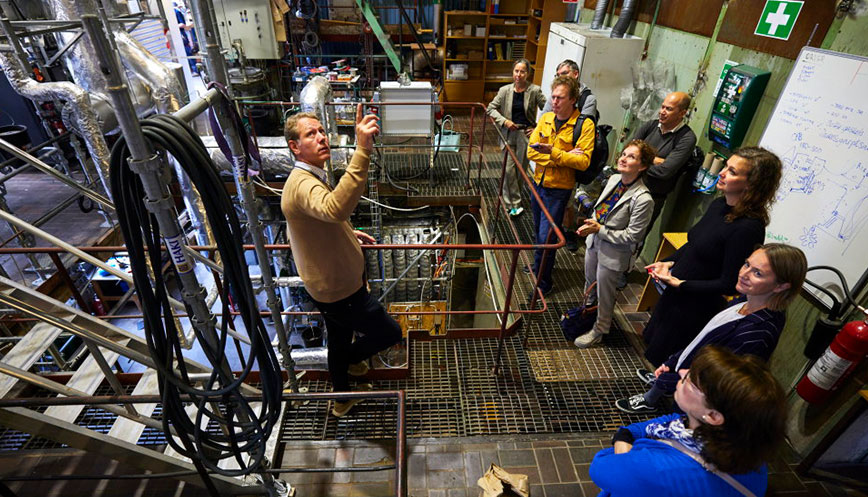
KTH Energy Platform's first school visit of the semester was to the old heat and power centre on the KTH Campus. The front of the building is home to Phoenix Biopower, a company that develops tomorrow's highly efficient bioenergy technology for plannable electricity production.
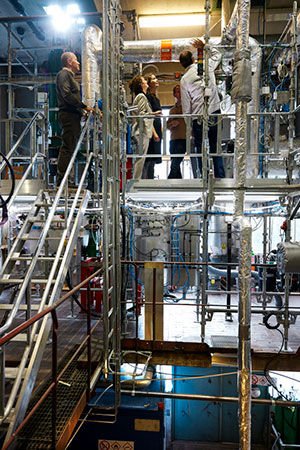
Henrik Båge received the KTH Energy Platform on 28 August in the power station with the tall chimney on Drottning Kristinas väg. He is the CEO and co-founder of Phoenix Biopower and one of the driving forces behind the ongoing development of a mini power plant based on the company's technology, called BTC: Biomass-Fired Top Cycle . He is grateful to Akademiska Hus for locating the plant here. Few premises in central Stockholm could accommodate the business.
Double the efficiency of current plants
"What we do, instead of burning pellets directly in the boiler, is first to gasify the fuel under pressure. Then, the gas is cooled down and filtered before entering a gas turbine that generates electricity and heat. In this way, we can achieve almost twice as much efficient electricity as in conventional biofuel plants. In these, the efficiency is about 25-30 per cent, while we can reach 50-60 per cent," Henrik Båge says.
Not all parts of the process are in place in this pilot plant. For example, no steam is generated, which would otherwise be returned to the system to cool the gas. Instead, the development team must create the steam separately and then introduce it into the system, a simulation needed to properly measure the energy processes.
With the goal of a commercial plant, the aim is to produce 10 megawatts of electricity in the first version, then 40 and then 100 megawatts of electricity in the final installation. But before that, work continues on test facilities, with the next step being the addition of a gasifier and gas turbine.
Henrik Båge does not yet know where this will be built but reveals that the facility could be located outside Sweden. A pressurised gasifier operating at around 10 bar pressure together with the gas turbine can then be expected to generate 2.5 megawatts of electricity. This provides proof of concept that the process works all the way.
In parallel with the development in Sweden, there is a collaboration with a Ukrainian partner to develop the special gas turbine required to optimise the BTC process. This is expected to take between five and seven years. With this turbine, it should be possible to increase the pressure during the gasification of fuel to 30 bar and the plant can run at full power.
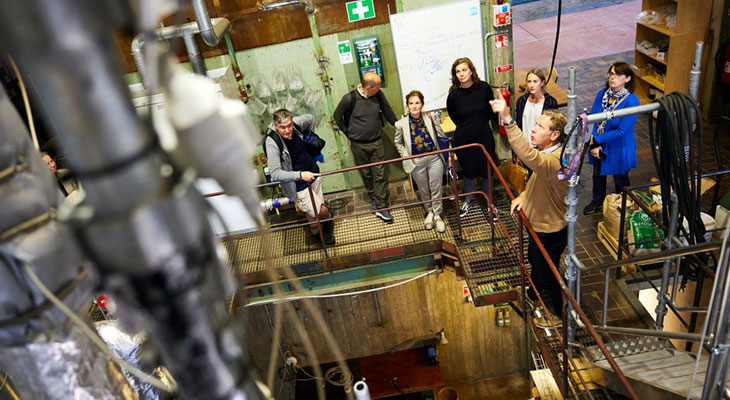
"We believe that the future of biomass use must lie in both increasing efficiency and working with BECCS - carbon dioxide storage of biomass that produces negative emissions. But BECCS alone is not enough to justify the use of biomass for electricity generation," Henrik Båge says.
He reveals that the company signed its first letter of intent on BECCS with an experienced power operator a week ago. Similarly, a Swedish municipality is about to sign a cooperation agreement with the company. The company's technology is attracting attention with its potential for local and sustainable electricity production. Something that is needed when Sweden both needs more energy and wants to reduce its climate impact.
A possible competitive advantage for municipalities
So, which other actors should show interest in BTC technology?
"All CHP operators in the country's municipalities are keeping an eye on this and most other energy companies find the technology very interesting and want to know more," Henrik Båge says.
He points out that electricity is a competitive advantage for municipalities that want to retain their business community and population size. If there is no good access to electricity, sooner or later, companies will move, and with them, the inhabitants of the municipality. This is where the electricity market zones come into play, where electricity-intensive companies can pay unreasonable prices depending on where they are located. Bioenergy with BTC gives municipalities the opportunity to generate their own local and sustainable electricity.
Michael Bartlett is Phenix Biopower's Chief Technology Officer. He has a background as a researcher at KTH, where he did his PhD in energy processes before entering the industry. He was asked by the visitors how the company views biomass from a scaling-up perspective.
"We want to use the same fuel as today, and there is competition for this. However, we believe that electricity is a commodity that the market wants to pay more for, over time. Anyone who can convert biomass into electricity will be able to charge more for it. But when the chemical and fuel industries fight for today's biofuel, we will have to look further afield to other forms that they do not use," Michael Bartlett says.
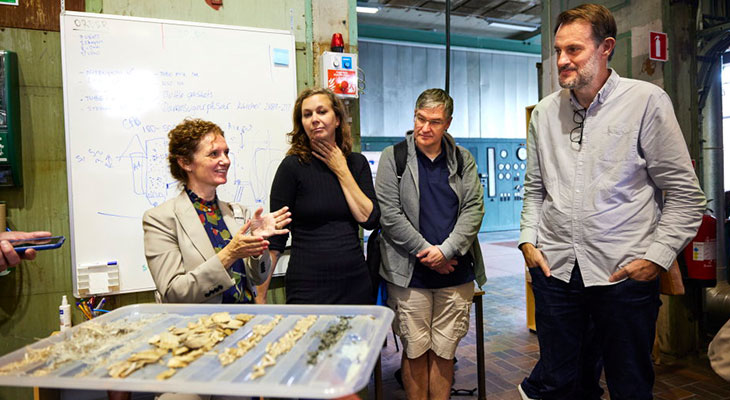
He then showed the biomass used in the tests: bagasse (sugar cane residue), grot (forestry waste), fuel pellets and sunflower seed husk pellets. Henrik Båge explained that the reason they are looking at fuels from different parts of the world is because they want their technology to be used globally.
"We want to be able to approach other markets in other countries. Therefore, we are also looking at the possibility of using so-called C4 grass, which is grown in Senegal and the Dominican Republic. This crop can be grown on nutrient-poor soils and helps to make them more arable after a few years, as the grass effectively sequesters carbon in the soil," Henrik Båge says.
He points out that it is best to use pelletised biomaterials, as this reduces the risk of downtime in the process. More compact fuels also reduce the need for pressurisation gas and require smaller vessels.
Together, Michael and Henrik explain that pelletised material is not necessarily more expensive than material that has not been processed before it is used. The idea is that we will have a dryer and pelletiser in our future power plants.
Sweden's expertise in biofuels is needed in the EU
So, what are the important issues for society's decision-makers to pay attention to, if high-efficiency bioenergy technology is to have a future?
"A natural question is to decide where the electricity in Sweden should come from. Today, there is no complete palette of different energy sources to meet the needs and create a stable electricity supply. Bioenergy must be a natural part of the energy mix," says Michael Bartlett.
And the biofuel itself?
"Then we need to look to the EU. If Brussels is to decide on forest management rules, there is a risk that Swedish expertise in this area will be overlooked. Not everyone in the EU looks at trees the way we do in Sweden. Some want to protect all forests at all costs. Here, the Swedish Environmental Protection Agency could contribute with a different perspective, they have a good overall view. But the government should also get involved in this issue at the EU level and assert the principle of subsidiarity. After all, the forestry industry is Sweden's biggest export sector," Henrik Båge concludes.
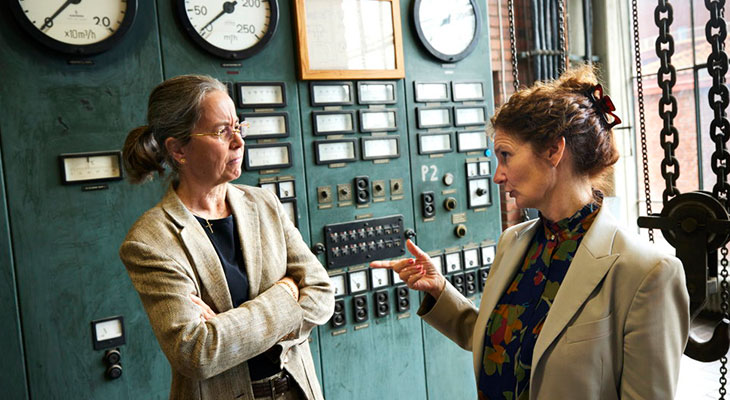
13 people work at Phoenix Biopower, two of whom are based in Switzerland. Some of the development takes place in collaboration with KTH and there is also collaboration with, among others, Rise, the University of Berlin, the University of Turku, the Swedish Energy Agency and Horizon Europe.
The platform's visit this time was led by Christophe Duwig, Deputy Director of the KTH Energy Platform and Lina Bertling Tjernberg, Director of the KTH Energy Platform. Also participating were Kerstin Forsberg from the School of Engineering Sciences in Chemistry, Biotechnology and Health, Pernilla Hagbert from the School of Architecture and Built Environment, Helena Mayer, Research Communications Officer, KTH Research Platforms, and Pierre Bodin, Senior Research Advisor at KTH Research Support Office.
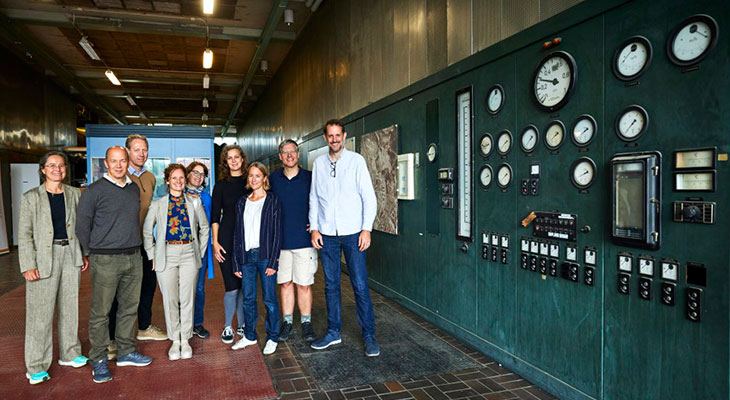
Text: Håkan Sandgren

